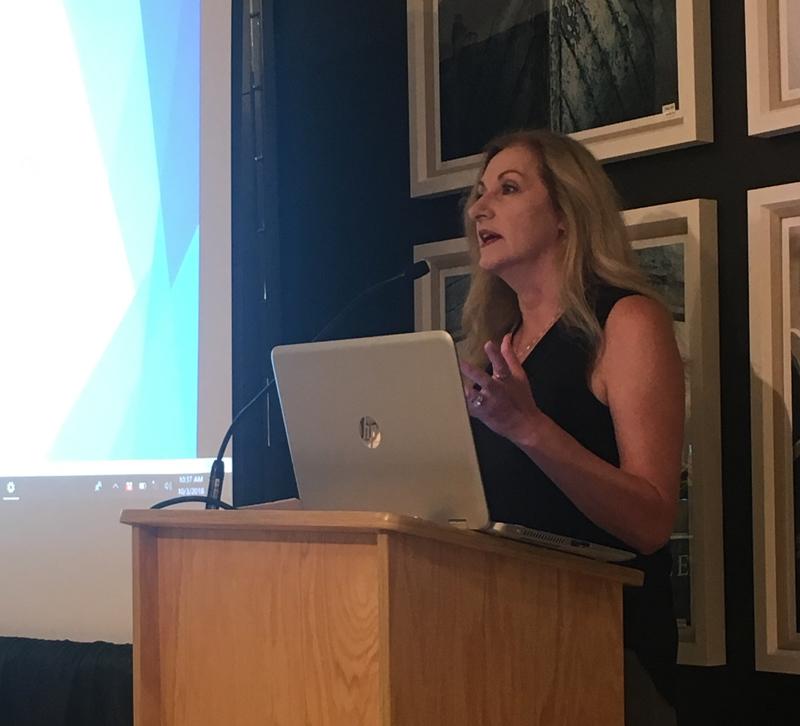Interior designers attending Design Chicago last week came ready to learn and report. On Wednesday morning in the Century Furniture showroom at the Merchandise Mart in Chicago, a large group of designers gathered to hear Paula Grace Halewski, owner and CEO at Paula Grace Designs & Consulting, give a talk on firm culture and its relation to agreements and contracts. Clearly, the topic had been weighing on many minds because no one made a sound until Halewski called for questions.
During her 45-minute presentation, Halewski explained that a thorough contract can better cement a firm's culture — the way all employees behave, how they related to the principal designer and how projects are completed — and provide designers with a route for stopping common problems that crop up over the course of projects.
Whether they think of themselves as designers or CEOs, designers that own their own firms need to remember that running a successful business takes more than just being a talented designer. Here are five of Halewski's most poignant tips for strengthening interior design contracts and businesses.
Have a general contract, but personalize it each time
Industry groups like the American Society of Interior Designers offer their members generalized contracts that designers can download and tweak to fit their business models. Halewski says these contracts provide a great starting point, but even after designers tweak them, they should also be tweaking them with every new client that comes along.
Every client's project is unique; therefore, every contract should be unique. After meeting with the client, seeing the space and hearing what they want and need, go to your contract and revise the scope section of your contract to accurately reflects what the client is asking from you.
Stop scope creep
When Halewski said "scope creep," listeners in the crowd murmured and nodded their heads. Scope creep occurs when a client asks the designer to add on extra services and does not expect to be charged for them. It often starts small with simple requests, but if the designer isn't careful, clients can end up adding additional rooms to the project. By that point, interior designers feel obligated to do the extra work without pay or risk losing a good relationship with a client.
Your contract can help you avoid scope creep. In the scope section of your contact, outline specifically what the project is and is not and call out specific instances that often to lead scope creep. For example, if the client wants additional design work for another room in the home, outline exactly what the designer will then do and when additional charges will be applied. Specify communication expectations and ensure clients have a clear channel for how to ask for these additional services. Halewski recommends getting written email confirmation for any added charges, so specify that in the scope and make sure you add a copy of the email to the contract for reference.
Address outside shopping expectations
In this day and age, it's rare to have a client that never sends at least one product they found online and asks for your opinion. Rather than fight it, Halewski recommends having a policy in place for what to do if clients choose to do outside shopping on their own.
These points should be covered in the scope section, and they should detail what the designer's response and course of action will be. This could include:
- If a product is ordered, the designer will not be responsible for its delivery or return if necessary.
- If a client wants to add a product he or she has purchased to the designer's plan, there will be an additional fee for redoing the original plan.
The goal is to set expectations and stop scope creep. If clients shop on their own, that's fine. Just make sure they know what your involvement will and will not be.
Go over every contract in person with the client(s)
Halewski stressed that listeners take this one rule away from her talk: No matter what type of client you have, do not cut corners by giving the client the contract to read and send back with signatures. If designers truly wish to avoid — or at least lessen the chances of — problems, it is vital that they sit down with prospective clients and go over the contract.
This is the best way to ensure your client understands the service you are providing and what it is and is not. As with any iTunes or Facebook agreement ever signed, the client has likely not carefully read through every point, and even if they have, it's likely they didn't understand everything. Explaining every part of your contract may be tedious, but it will likely lead to fewer problems in the future and less stress for the designer. Should a client want the designer to do some extra work, the designer can refer back to the contract and conversation and inform the client of the expected charge.
Clients likely have plenty of questions about their service anyway, and there may be terms in the contract that they do not understand. By giving them time to ask questions, they'll have realistic expectations of what it will be like working with you and confidence in hiring you.
Will this conversation stop all problems? No, but it will give clients a roadmap.
Designers, we want to know: What do you do to set client expectations? Share with us in the comments!







